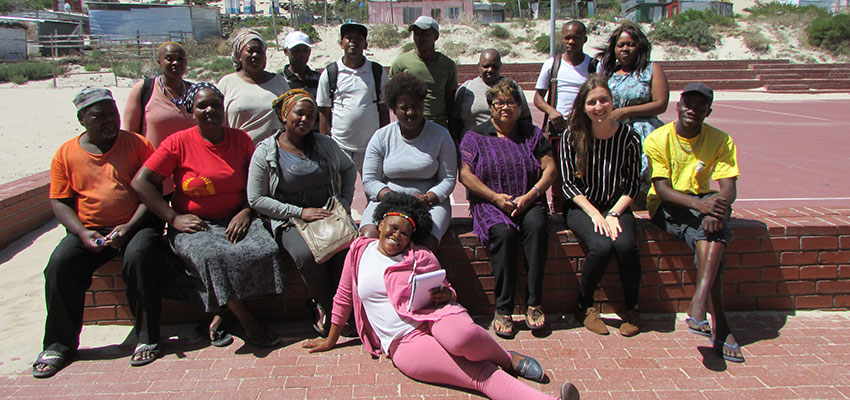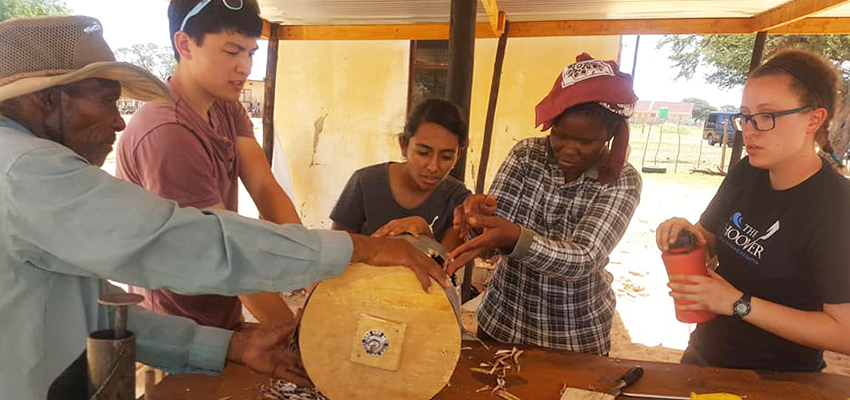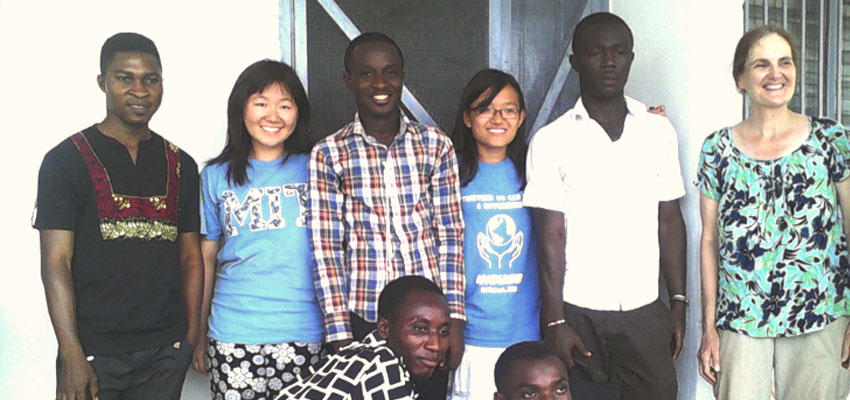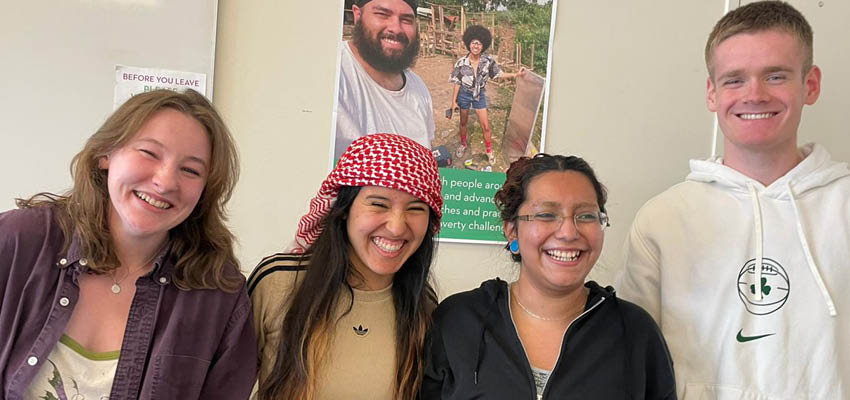
This project aims to increase water sovereignty and availability in the region of Pucara, Peru through collaborating with local campesino communities to build qochas and fog nets.
MIT D-Lab class
D-Lab: Water, Sanitation, and Hygiene
Community partner
Leonsio Huarcaya
Country
Peru
Student team
MIT students unless otherwise noted.
- Kathleen Julca - MIT ‘25
- Catie Macauley - Wellesley ‘26
- Thomas Brooks - MIT ‘24
- Shaela Sageth - Wellesley ‘26
Problem framing
Forty-eight percent of the total population of Peru lack access to safe water, and Pucara suffers from this
issue acutely, with exacerbating factors like illicit mining pollution, arsenic, and human waste in rivers nearby. The impacts of this crisis are especially felt during the dry season (May-October), when even when people do their utmost to conserve water, the shortage is severe. Climate change has exacerbated this problem even further as the rainy season gets shorter and shorter every year. Since agriculture and farming are two essential components of the livelihood of Pucara, it is imperative that people in this village have access to reliable sources of clean water.
We aim for this to be a project in co-creation, leading with Pucara cultural values of ayni
(reciprocation) and sumaq kasay (good living). We honor and recognize that whatever solution we find needs to be implementable and scalable for the people in Pucara, and want to amplify ancestral knowledge in sourcing water. This is especially true for the qochas, which have been built in pueblos originarios (original towns) for generations. With consistent monitoring of water table levels, they are a reliable source of water across seasons, serving as a reservoir.
We are currently working on problem-solving around how to create a permeable layer for water to move through and collect in the qocha basin - though the town of Pucara has the floodplains and elevation conducive to a well-functioning qocha, they lack the usual clay layer underneath the earth’s surface that serves as a reliable way for the qocha to reach groundwater. We believe leading with the aforementioned cultural values will be imperative to the success of this water sourcing, as experts have informed us that community input and investment are essential, since qochas require constant work to move water and keep clean. We also are working to strike a balance between emphasizing these values, and respecting land rights and access, since many potential locations to build a qocha are privately owned.
Indigenous people protect 80% of the world's biodiversity, and there is increased droughts and freezing of their crops in Puno. As time passes these get worse and more severe as reported by local campesinos. There is an increased worry about both the quality of water and amount of water.
Cultural and/or market context
The qochas are deeply rooted in cultural practices and ancestral knowledge and relationship to the land. The qochas are not well described in any research, and there is an indigenous author looking to publish about his experience working with qochas. This project is working synchronously with people in the village asking for increased water supplies and indigenous scholars interested in documenting the oral and technical history behind creating qochas. There is a big contrast between what the Peruvian government calls qochas and what indigenous and campesinos understand to be qochas.
There is also an in-depth understanding of the Earth of a part of them, an Andean worldview considers the rivers to be the veins of the Earth and the qochas to be sacred sites that must be honored in ancestral ways. The water is considered to be the blood of the Earth. Given this context, this project has to be extremely localized and grounded in understanding indigenous knowledges and worldviews and getting to know the land. It will however have incredible outcomes for people with ganados and people who practice farming, given the results are increased water availability, access, and fertilizer for being used for farming.
Solution including technical details
We aim to site and build a qocha, a type of water reservoir common in the region, with the Pucará community. The community has already been interested in having a qocha to improve water access. We will identify and interview relevant community members to assist in choosing an optimal site and will assist in construction if possible. We also aim to build a prototype fog collector in Pucará to determine the viability of gathering water from the thick fog that covers the region. If successful at this small scale, collection could likely be scaled up in future trips or by the community.
Next steps
We will provide the community with prototype fog nets and guide them on monitoring the instrument's effectiveness across different weather seasons while ensuring its maintenance. Simultaneously, we will initiate the search for an appropriate qocha site and conduct on-site experiments to determine the optimal reservoir size. Although construction of the reservoir may not commence immediately due to labor constraints, we will equip the community with comprehensive instructions on reservoir construction and upkeep. Depending on the community's preferences, we intend to collaborate with an organization to oversee the construction process, or alternatively, empower the community to undertake the project themselves with support in the form of provided tools from an organization.
Contact
Kathleen Julca, Team member
Libby Hsu, MIT D-Lab Associate Director of Academics; Co-Instructor for D-Lab: Water, Sanitation, and Hygiene



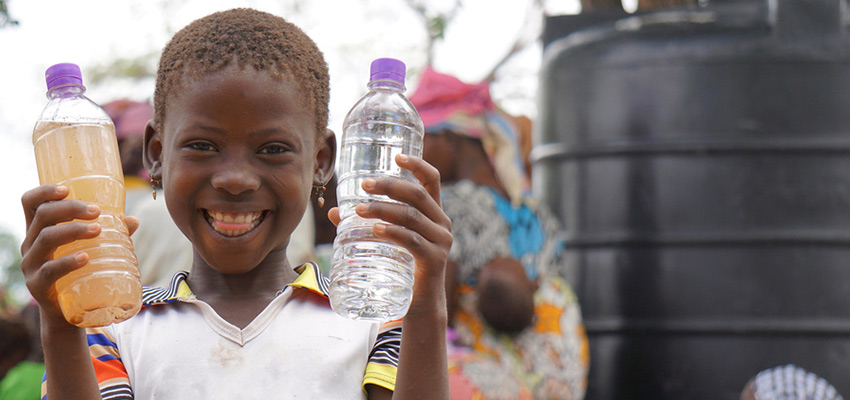
![More than 30 from MIT [including a D-Lab: WASH alumna and D-Lab Scale-Ups Fellow] named to Forbes 30 Under 30 lists](/sites/default/files/2018-12/Forbes%2030%20under%2030_0.jpg)
